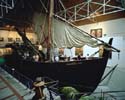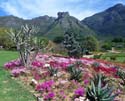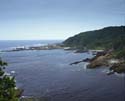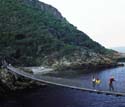 |
Great Cape Town Tours
|
|
|
|
 |
|
|
|
|
Fantastic Garden Route Tour
6 Days of Famous Cape Highlights
The
South africa Garden Route gives you an
experience of natural beauty and many
famous highlights. Only the Garden Route
can present it to you in such a stunning
way... the Southernmost Tip on the continent
of Africa, the Cango Caves, Diaz Museum and Knysna heads. See Natures Valley and cross the suspension
bridge over Storms River for breathtaking
views. We know all the right stops.
CLASSIC GARDEN ROUTE TOUR DETAILS
Distance: 1 648 km / 1030 miles
Duration: 6 days
Best time: All year
Included: Certified driver/guide,
a/c vehicle and gasoline
Excluded: Entrance fees, overnight accommodation, extra
optional excursions, lunch, dinner, drinks
Price: Please request a quote
Note: All tours can be customized
 Inquire
about the Classic Garden
Route Tour
Inquire
about the Classic Garden
Route Tour
-
Classic Garden Route Tour -
DAY
1
 1.
CITY BOWL CAPE TOWN 1.
CITY BOWL CAPE TOWN
The Garden Route tour starts in Cape Town’s
city centre. It lies cradled in a vast blue-grey
amphitheatre formed by Table Mountain, Lion’s
Head and Devil’s Peak. This conglomeration
of Dutch and Victorian architecture, interspersed
with modern wonders of glass and concrete,
is the heart of Cape Town and on either
side of Adderley Street is an eclectic array
of sightseeing highlights and urban attractions
that endowed the Mother City with its unique
flavour.
 2.
TOWNSHIPS 2.
TOWNSHIPS
The first township was built 1900 and situated
next to the old harbour in Cape Town. The
people were removed to Ndabeni when the
bebonic plague broke out during 1918. They
were again removed to Langa in 1923 when
the Spanish flu broke out. Guguletu was
built in 1948 and the hostels were developed
to house the black male migrant workforce.
Expansion of the local townships continued
after that.
 3.
GORDON’S BAY 3.
GORDON’S BAY
Tucked into a secluded corner of False Bay,
this holiday village has a small harbour
and is a popular angling and boating resort.
It takes its name from Colonel Robert Gordon,
commander of the garrison at the Cape from
1780 to 1795. A beautiful marine scenic
drive (Route 44) extends from Gordon’s Bay
to Hangklip, a 454 m high “hanging” chunk
of rock that marks the easternmost end of
the False Bay.
 4.
BETTY’S BAY (PENGUINS) 4.
BETTY’S BAY (PENGUINS)
Betty’s Bay was named for the daughter of
Arthur Youlden in the 1930s. Together with
two other businessmen of Johannesburg, they
developed the seaside municipality. The
African Penguin lives at Stony Point and
a visit will be worthwhile. The Herold Porter
National Botanical Garden in and around
Disa Kloof represents one of the largest
concentrations of wild flower species in
the country and has an entrancing waterfall.
 5.
HERMANUS (WHALES – SPRING) 5.
HERMANUS (WHALES – SPRING)
Hermanus ( a garden route highlight) is
one of the world’s finest holiday and fishing
resorts and also the best land based whale-watching
place. The town is named after Hermanus
Pieters and the first municipality proclaimed
in 1904. An official whale crier, complete
with uniform and horn, announces the arrival
of the gentle giants of the deep mostly
Southern Rights. There are many viewpoints
to watch them from winter to spring. The
giant marine mammals enter the bays both
to mate and, after a yearlong gestation
period, to calve.
 6.
CAPE AGULHAS (LIGHT HOUSE) 6.
CAPE AGULHAS (LIGHT HOUSE)
Cape Agulhas is the southernmost tip on
the continent of Africa. Officially it is
here where the Atlantic and Indian Ocean
meet, even though the warmer waters of the
Indian Ocean penetrates as far as Cape Point.
The name Agulhas was probably inspired by
the fact that the compass needles (“agulhas”)
of early Portuguese navigators showed no
magnetic deviation from true north here.
The first lighthouse was built in 1848.
 7.
SWELLENDAM DROSTDY MUSEUM 7.
SWELLENDAM DROSTDY MUSEUM
Swellendam is the 3rd oldest town after
Cape Town and Stellenbosch. Swellendam was
established in 1745 as sub-magistracy. For
a few months in 1795 Swellendam was a “national
capital” when the local burghers dismissed
the landdrost (magistrate) and declared
Swellendam a new colony, independent of
the VOC (Dutch East India Company). The
town was named for Governor Hendrik Swellengrebel
and his wife Helena ten Damme. Swellendam
is recorded as the garden route cradle of
South Africa’s Marino sheep farming industry.
The Drostdy which served as a seat of the
magistrate for over 100 years until 1846
is now a cultural history museum and one
of the country’s great architectural treasures.
8. (OVERNIGHT STAY: SWELLENDAM -
GARDEN ROUTE)
DAY 2
 9.
ALBERTINIA (ALOE FACTORY) 9.
ALBERTINIA (ALOE FACTORY)
The village of Albertina was named after
Reverend J.R. Albertyn and proclaimed in
1904. The district is largely wheat and
sheep farming area but today the mines for
red and yellow ochre are the country’s main
source. This is exported and mainly used
in manufacturing of paint. Quartsite and
Koalin are also mined in the district. The
other unique product is aloe juice or sap.
This eastern extremity of the Overberg is
the habitat of several species of the aloe.
A factory processes and produce various
aloe products and medicines.
 10.
MOSSEL BAY 10.
MOSSEL BAY
Mossel Bay has a strong association with
the early Portuguese navigators of the 15th
and 16th centuries. Bartholomeu Diaz sailed
on 3 Feb 1488 into the bay and replenished
his supplies of water. Other explorers used
the same spring too for the years to come.
Mossel Bay is South Africa’s 7th largest
port and boasts the first “post-office”
and church in the country. Legend has it
that the Dutch navigator Paulus van Caarden
entered the bay in 1601 and found nothing
else than mussels to replenish his supplies
and from there the name.
 11.
DIAZ MUSEUM COMPLEX 11.
DIAZ MUSEUM COMPLEX
The Mossel Bay Museum Complex has recently
been upgraded and displays a rich cultural
history. The old “post-office” tree inaugurated
by D’ataide, and the fountain, which supplied
many vessels, are now national monuments.
A letter- box in the shape of a Portuguese
seaman’s boot is placed in 1963 by the Post
Office and letters can be posted here. In
the maritime museum is the prize exhibit
of the caravel built in Portugal and suited
to South Africa in 1988 to mark the 500th
anniversary of Diaz’s “discovery” of the
bay in 1488.
 12.
GEORGE (CITY TOUR) 12.
GEORGE (CITY TOUR)
A woodcutters past was already established
here in 1776 to organize the felling of
timber in the mountains. George Town was
proclaimed on 23 April 1811 and the first
new district in the colony under British
control. The name honoured the monarch at
the time, George III. The actual “Garden
Route” starts here and in those days with
all the forests and their fynbos undergrowth
intact, the sobriquet "Garden of Eden" would
not have been inappropriate at all. Mixed
farming and timber are the main source of
income.
13. (OVERNIGHT STAY: GEORGE GARDEN
ROUTE )
DAY 3
 14.
KNYSNA LAGOON BOAT TRIP (OPTIONAL) 14.
KNYSNA LAGOON BOAT TRIP (OPTIONAL)
A number of ferry trips around the Waterfront
are available daily, weather permitting.
Some companies offers trips on the Lagoon
and beyond the head and others for sundowner
trips on the Lagoon visiting the Nature
Reserve where the Knysna Loerie, Blue Duiker
(smallest antelope) and sea horse can be
seen.
 15.
KNYSNA HEADS 15.
KNYSNA HEADS
There is no certainty to the meaning of
the word of Khoisan origin. One source suggested
it is a corruption of the two words meaning
“straight down” a reference to the two cliffs
at the entrance to the harbour, now known
as the Heads. The Eastern Heads viewpoint
offers a panoramic view of the town, the
estuary and the Indian Ocean. It's Garden
Route Highlight.
 16.
GARDEN OF EDEN 16.
GARDEN OF EDEN
The Garden of Eden offers walks ranging
from easy to difficult and from short to
long through the Knysna Forest in the heart
of the Garden Route. The walking route in
the Garden of Eden is wheelchair friendly.
The forest can be entered at any time during
the day but its best to leave before sunset.
South Africa’s National tree, Yellow wood
and other indigenous trees like the Ironwood,
Stinkwood, Milkwood and many others can
be seen.
 17.
KNYSNA WATERFRONT 17.
KNYSNA WATERFRONT
The Knysna Waterfront-development boasts
fine vintage wine, fresh seafood, curios
and much more. One can shop, eat or simply
sit on the quay side and watch boats rocking
on the tide. The famous Knysna oysters and
seafood offers you the opportunity to taste
and enjoy freshly harvested cultivate and
wild oysters from the lagoon.
18. (OVERNIGHT STAY: KNYSNA GARDEN
ROUTE)
DAY 4
 19.
PLETTENBERG BAY 19.
PLETTENBERG BAY
Plettenberg Bay is a glamorous holiday destination
and named after Governor Joachim van Plettenberg
in 1778. He opened a timber pier on the
shores of the bay and the development of
the town began. Today Plettenberg Bay is
known especially for its three beaches and
water-skiing on the Keurbooms River Lagoon.
Plettenberg Bay is rich in history and is
sheltered in the west by Robberg Nature
Reserve. It is also a surfers heaven on
earth.
 20.
R102 (NATURE’S VALLEY) 20.
R102 (NATURE’S VALLEY)
The Route 102 and the passes negotiating
the Groot-, Bloukrans- and Stroms River
gorges are regarded as Thomas Bain’s (master
pass builder) masterpieces. The “old passes
road” offers one of the mots rewarding scenic
drives in the country to travellers who
have time to linger, observe and appreciate.
Nature’s Valley incorporates the Lagoon
and the mouth of the Groot river. In the
valley of the river are several ancient
Yellow Wood trees, some of them about 800
years old. Beautiful picnic and overnight
facility developed here. A lookout point
endorses the beauty of the Garden Route
wiith an extra-ordinary beautiful panoramic
view.
 21.
TSITSIKAMMA NATURE RESERVE 21.
TSITSIKAMMA NATURE RESERVE
Tsitsikamma National Park (the park of “running
waters”) is proclaimed in 1964 at the eastern
end of the Garden Route. The park compromises
two sections namely indigenous forest and
a coastal strip astonishingly rich in marine
life. The park is situated 68 km from Plettenberg
Bay. The access route from the N2 highway,
as well as all internal roads are tarred.
 22.
STORMS RIVER SUSPENSION BRIDGE 22.
STORMS RIVER SUSPENSION BRIDGE
The rest camp near Storms River Mouth offers
several day walks. The Mouth Walk is especially
popular and meanders to the suspension bridge
spanning Storms River Mouth. Visitors can
get close-up views of the awesome gorge
by taking a boat cruise up the river.
 23.
BLOUKRANS RIVER BRIDGE (WORLD’S HIGHEST
BUNGY JUMPING) 23.
BLOUKRANS RIVER BRIDGE (WORLD’S HIGHEST
BUNGY JUMPING)
The original Bloukrans Pass was built during
1881 and recently upgraded. Shortly after
crossing the Bloukrans River there is a
magnificent viewpoint of the toll road-bridge
over the river. This is the place where
the world’s highest bungy jumping takes
place. Refreshments can be enjoyed while
watching people jumping, or you can do it
yourself !
 24.
SEDGEFIELD 24.
SEDGEFIELD
Sedgefield takes its name from the many
large patches of sedge in the neighbourhood
and was established in 1928. This was the
year when the railway from George to Knysna
was completed. The road through Sedgefield
passes between bush-covered sand dunes on
the seaside and the lakes, some forest-fringed,
with superb vistas on the mountains. Sedgefield
is a quaint little town for people in love
with nature in the heart of the Garden Route.
 25.
WILDERNESS 25.
WILDERNESS
Wilderness, village and resort, is located
on the mouth of the Touws River. Hippopotami
use to wallow here in the early days. The
resort’s name is rooted in its traditional
popularity as a honeymoon destination. A
number of view sites are provided to drink
in the beauty of nature, watching dolphins and
whales.
 26.
OUTENIQUA PASS 26.
OUTENIQUA PASS
Construction of the Outeniqua Pass, a modern
expressway was started in 1943 and opened
on 20 September 1951. The pass rises at
a steady rate outside of George to reach
the summit (800 meters) 14km later. It is
just a sheer driving pleasure to travel
on this road with exquisite views over the
coastal belt and onto the Little Karoo on
the other side. Viewpoints give opportunity
to absolute photo stops.
 27.
OUDTSHOORN CITY TOUR 27.
OUDTSHOORN CITY TOUR
The town was proclaimed in 1863 and named
for Baron Pieter van Rheede van Oudtshoorn.
He tragically died at sea in 1773 en-route
to the Cape to take up his appointment as
governor. Oudtshoorn is the ostrich capital
of the world. Several “feather palaces”
was built as a result of the feather boom.
Oudtshoorn is the venue for the Little Karoo
arts Festival.
28. (OVERNIGHT STAY: OUDTSHOORN)
DAY 5
 29.
CANGO CAVES 29.
CANGO CAVES
The Cango Caves with their dripstone creations
are universally regarded as one of South
African’s greatest natural wonders. These
stalactites (hanging crystals), stalagmites
(those growing upwards) and helictites (those
growing in any direction) began to be formed
about 100 million years ago in crystalline
limestone along an old fault line in the
foothills of the Swartberg range. Guided
tours of the caves can be undertaken and
lasts 1 hour.
 30.
OSTRICH FARM 30.
OSTRICH FARM
Oudtshoorn is the only district in South
Africa where the world’s largest flightless
bird is commercially farmed on a large scale.
A tour on one of the show farms can be undertaken
and last 1 hour. It includes a ride on the
birds for the more adventurous.
 31.
CALITZDORP / (PORT CAPITAL OF SOUTH - AFRICA) 31.
CALITZDORP / (PORT CAPITAL OF SOUTH - AFRICA)
Calitzdorp became a municipality in 1913.
Is regarded as the Port Capital of South
Africa. Calitzdorp is renowned for the quality
of its deciduous fruit, table grapes and
wine. Tasting the Port and wine is a must.
Calitzdorp Spa has been developed 17 km
south east of the town and the hot mineral
spring is 50 degree C at source.
 32.
RONNIE’S S.. SHOP 32.
RONNIE’S S.. SHOP
Ronnie’s S.. Shop is situated halfway between
Barrydale and Ladismith. It is the ideal
place to stop and have some refreshments
and stretch the legs. Ronnie’s S... Shop
is one pleasant surprise along the Route
62. It's a fun quick stop on the Garden
Route tour.
 33.
BARRYDALE (WINE TASTING) (OPTIONAL) 33.
BARRYDALE (WINE TASTING) (OPTIONAL)
Barrydale was established by John Joseph
Barry and gained municipal status in 1921.
Barrydale is known for its stately houses,
wild flowers and soft fruit. The Centenary
Nature Garden boasts the largest variety
of mesembryanthemums (vygies) in the country.
Tasting the beautiful wines that are produced
in this area is a must.
 34.
MONTAGU HOT WATER SPRING (OPTIONAL) 34.
MONTAGU HOT WATER SPRING (OPTIONAL)
Montagu is regarded as the “capital of
the Langeberg valley” and was named for
Mr John Montagu, colonial secretary (1843-1853).
Wine and fruit production is the district’s
main economic activities. Wine tasting is
a must. Long street, the oldest in town
and by many considered architecturally one
of the most important streets in the country.
The hot mineral spring 3km out of town (43
degree C at source) has always been a great
attraction.
35. (OVERNIGHT STAY: MONTAGU)
DAY 6
 36.
ASHTON 36.
ASHTON
Ashton remained a little more than a busy
siding until 1940 when the Langeberg co-operative
built a huge canning factory nearby. Several
more suburbs had been laid out since. Fruit
and wine are the main economic activities
of the town. Wine tasting must be experienced
to remember.
 37.
ROBERTSON 37.
ROBERTSON
Robertson was founded in 1852 and is often
referred to as the “muscadel and brandy
capital” of the country. The town is named
for the Reverend Dr W. Roberston of Swellendam
with so many excellent wine estates close
to one another, tasting of wine can be arranged.
 38.
CELLAR TOUR & WINE TASTING 38.
CELLAR TOUR & WINE TASTING
The region is best known for its wines,
especially desert wines and liqueurs. There
are three co-operative wine cellars and
the KWV brandy distillery is reputed to
be the largest in the world under one roof.
Revel in the luxury of top quality wines
before driving to the next village.
 39.
WORCESTER (KLEIN PLASIE OPEN-AIR MUSEUM) 39.
WORCESTER (KLEIN PLASIE OPEN-AIR MUSEUM)
Worcester “capital of the Breede River Valley”
was founded, developed and granted municipal
status in 1842. The town is the commercial,
distribution and transport centre for the
district. Five major roads including the
N1 radiate in all directions. Kleinplasie
(“little farm”) is a living open-air agricultural
museum with a full range of period farmyard
buildings. Visitors receive a glimpse of
the pioneering days of farming when the
farmers had to be self-reliant or go under.
 40.
DU TOIT’S KLOOF PASS 40.
DU TOIT’S KLOOF PASS
The scenic route between Worcester leads
through the Breede River Valley and flanked
by vineyards that is bush green during spring
to summer and a kaleidoscope of colours
during high autumn. The route winds through
the Du Toit’s Kloof Mountains that is occasionally
covered with snow during winter. The effect
of these majestic mountains will stay with
you for a long time to come.
 41.
PAARL 41.
PAARL
Dutch name of place founded in 1720 by William
Gabemma means “Pearl” in English and refers
to a granite round rock which shines like
a pearl when the sun reaches a certain position.
The town lies nestled in a charming very
fertile valley with the purplish blue 729
m high Paarl Mountain as a backdrop. The
Paarl wineroute covers 15 wineries just
outside the garden route.
 42.
ADDITIONAL: ADDO ELEPHANT PARK 42.
ADDITIONAL: ADDO ELEPHANT PARK
The original 8 596ha park was established
during 1931 to save the Addo elephant from
extinction. The Addo elephant is smaller
and carries less ivory than those of central
Africa but still belongs to the same species.
Currently the park, situated 70km north
of Port Elizabeth, is extended down towards
the coast with more animals that can be
accommodated.
 43.
ADDITIONAL: GAME SAFARI 43.
ADDITIONAL: GAME SAFARI
Many Game Ranches in the Eastern Cape are
well established. Visitors have the opportunity
to see some of Africa’s wildlife from very
near. It's a nice way to combine the garden
route with wildlife viewing. On some of
them, the opportunity is there to watch
the Big Five: Elephant, Rhinoceros, Leopard,
Lion and the Buffalo.
for
more possibilities Top
14 - Cape Town tour recommendations
|
|
|
|
|
|
 |
 |
 |
 |
 Contact
Us Contact
Us
©2000 - 2019 Meljo
Tours, All rights reserved, useful
links
Johnny Maasdorp - Cape Town - South Africa - +27(0)82
8204946
|
|
|
|
|